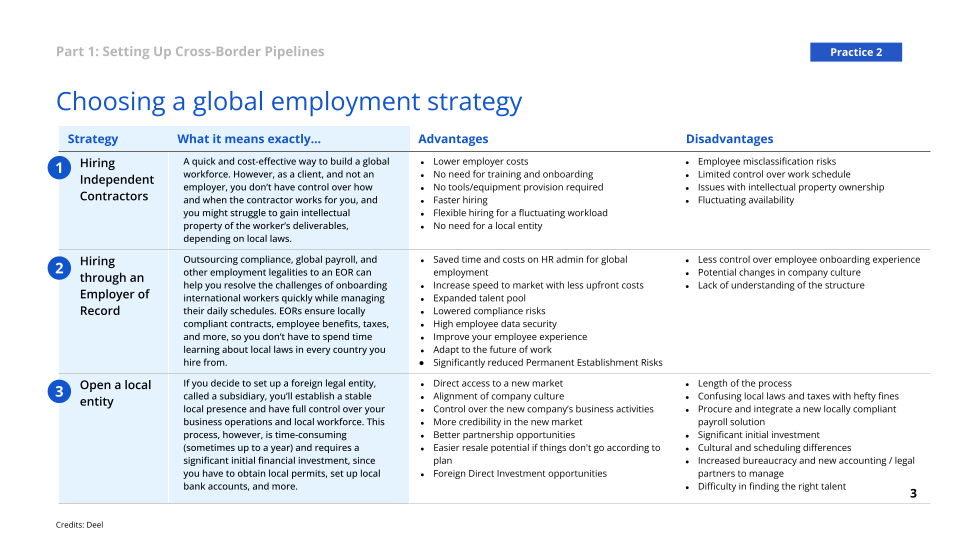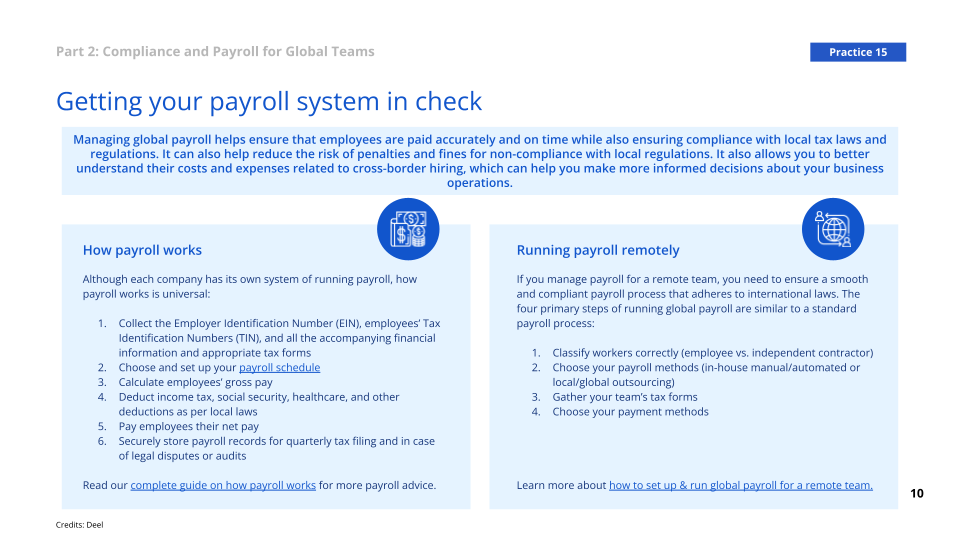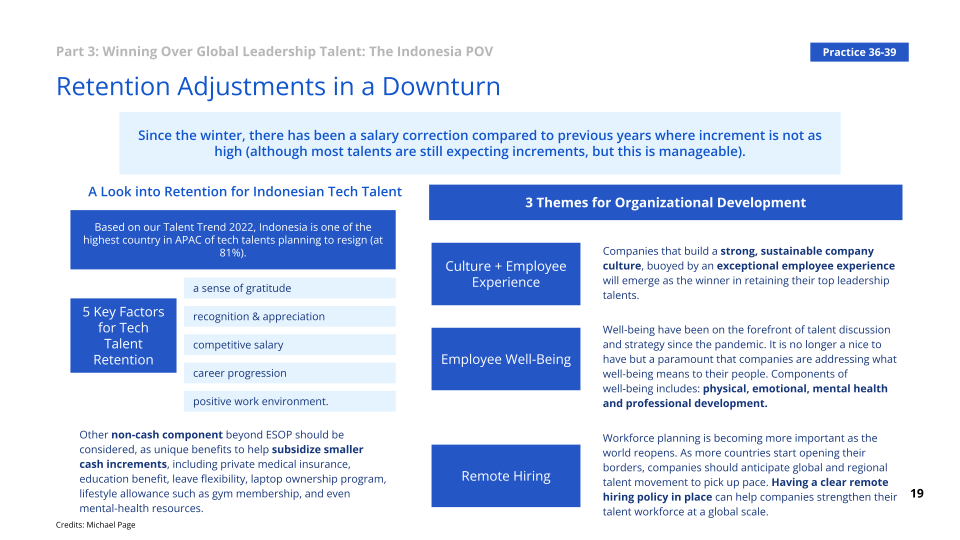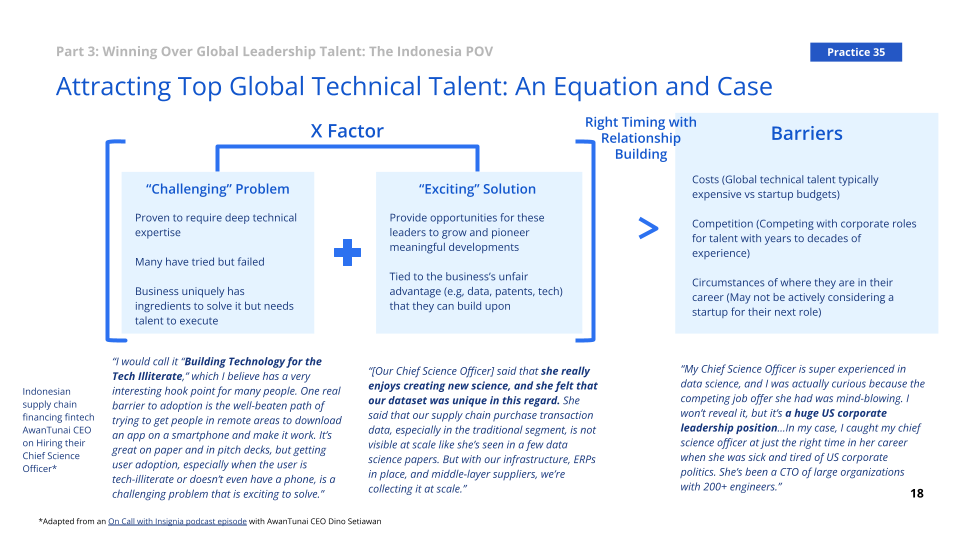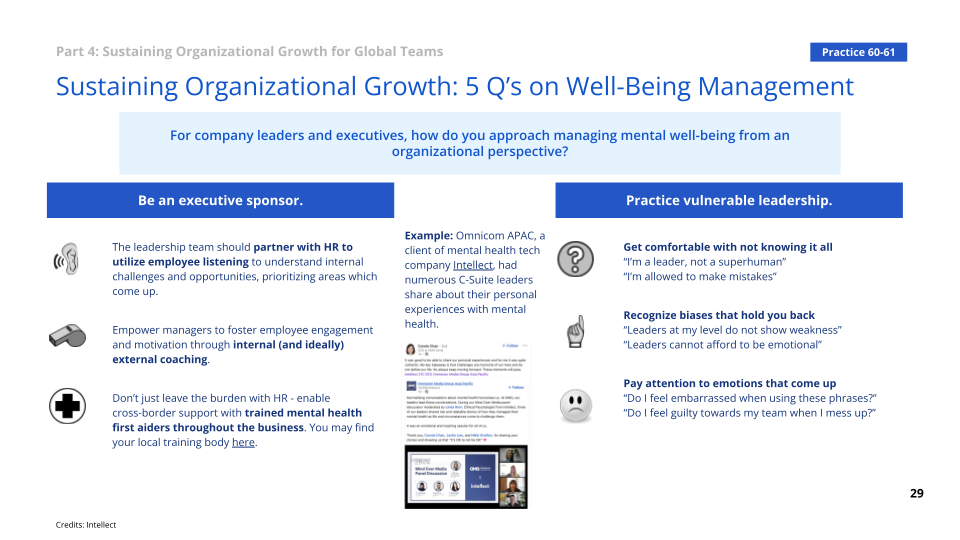On July 6th, in partnership with Deel, Michael Page, and Intellect, we launched a new playbook: “Startups Beyond Borders: 70+ Practices on Cross-Border Hiring and Building a Sustainable Global Organization.” It covers various topics to help leaders navigate cross-border expansion from a workforce or talent perspective, from GTM to payroll to talent acquisition and retention to organizational development.
Hence, it’s quite the jampacked read — could be a great read to start or end your day plus a much-needed reference in an HR planning meeting — so we’ve lined up five key takeaways for you to check out before you dive right in.
Highlights
- Don’t just think about GTM for your business operations or product. Plan the right GTM for your workforce as well.
- Avoid falling into the trap of employee misclassification and other common payroll / compliance pitfalls in market expansion. Roll with the right channels for compliant payroll.
- Retention is holistic and founded on company culture and employee wellbeing.
- Implementing employee wellbeing strategies all starts with ownership and transparency at the top.
- Organizations need to become more nimble as they become more complex, and not go the other direction.
Of course you can just skip the article and get your copy here.
(1) Don’t just think about GTM for your business operations or product. Plan the GTM for your workforce as well.
We often think about go-to-market strategies for the business or the product, but you also need to think about the workforce aspect of your go-to-market strategy. Ultimately, without the right structures to hire people in specific markets, sustaining operations there will be challenging.
There are option to choose from, which have their pros and cons depending on the kind of expansion you are looking at for your business in that market. For example, are you simply looking to expand your workforce or are you looking to acquire customers in that market as well?
In this page from the playbook below, we map out the nuances across hiring independent contractors, hiring through an employer of record (EoR) or opening up a local entity. We also share more in the playbook about concrete steps to take to set up your chosen employment strategy.
(2) Avoid falling into the trap of employee misclassification and other common payroll / compliance pitfalls in market expansion. Roll with the right channels for compliant payroll.
Emphasis here on the word “compliant”. The nuances of managing compliant payroll across countries are often understated or overlooked as companies would tend to have a million other priorities to juggle and not have enough people bandwidth to manage this aspect of expansion. This is a typical pitfall where employees are not classified correctly, potentially resulting in violation of tax laws, etc. This is where end-to-end, consolidation solutions that take into account easier navigation of local regulations come into play.
In this page from the playbook below, we introduce the concept of payroll systems and what to consider when running payroll remotely across multiple markets. We also share more in the playbook about concrete steps to managing global payroll.
(3) Retention is holistic and founded on company culture and employee wellbeing.
Retention is always a holistic affair. But especially in a market downturn, where there are salary corrections across levels along with tighter budgets, companies need to broaden their retention strategies beyond cash-based components. Regardless of incentive packages, retention capabilities for organizations need to be founded on a strong, sustainable company culture, which reflects in employee behaviors and experiences.
In this page from the playbook below, we share drivers and foundations for retention adjustments amidst market downturn, especially in Indonesia, with insights from Michael Page Indonesia. We also share more in the playbook about how to tap into Indonesia’s talent pool as an international organization.
The same ingredients that go into a company’s retention approach also impacts the way they are able attract talent, as we see in an example shared in the playbook from a recent conversation with AwanTunai CEO Dino Setiawan.
(4) Implementing employee wellbeing strategies all starts with ownership and transparency at the top.
One of the understated aspects of retention is developing structural operations (vs one-off kumbayah programs) around employee wellbeing. This requires cross-functional partnerships and engaging with the right experts to deliver some of these wellbeing services. But more than the processes, leaders need to be willing to kick things off with the way they communicate and relate to their employees as well.
In this page from the playbook below, we share how leaders can approach cascading employee wellbeing programs throughout their organization, with insights from Intellect. We also share more in the playbook about how to ensure these initiatives ultimately contribute to the business bottom line and are sustainable.
(5) Organizations need to become more nimble as they become more complex, and avoid going the other way around.
There is a typical perception that an organization would lose its speed and nimbleness as it becomes more complex with more built-out functions and business units. But there are ways to maintain and even grow that nimbleness by focusing on how the organization prioritizes decision-making, initiatives, and performance. Items illustrated in this page of the playbook are discussed further in this conversation with Flip COO Gita Prihanto on our podcast.
Paulo Joquiño is a writer and content producer for tech companies, and co-author of the book Navigating ASEANnovation. He is currently Editor of Insignia Business Review, the official publication of Insignia Ventures Partners, and senior content strategist for the venture capital firm, where he started right after graduation. As a university student, he took up multiple work opportunities in content and marketing for startups in Asia. These included interning as an associate at G3 Partners, a Seoul-based marketing agency for tech startups, running tech community engagements at coworking space and business community, ASPACE Philippines, and interning at workspace marketplace FlySpaces. He graduated with a BS Management Engineering at Ateneo de Manila University in 2019.
